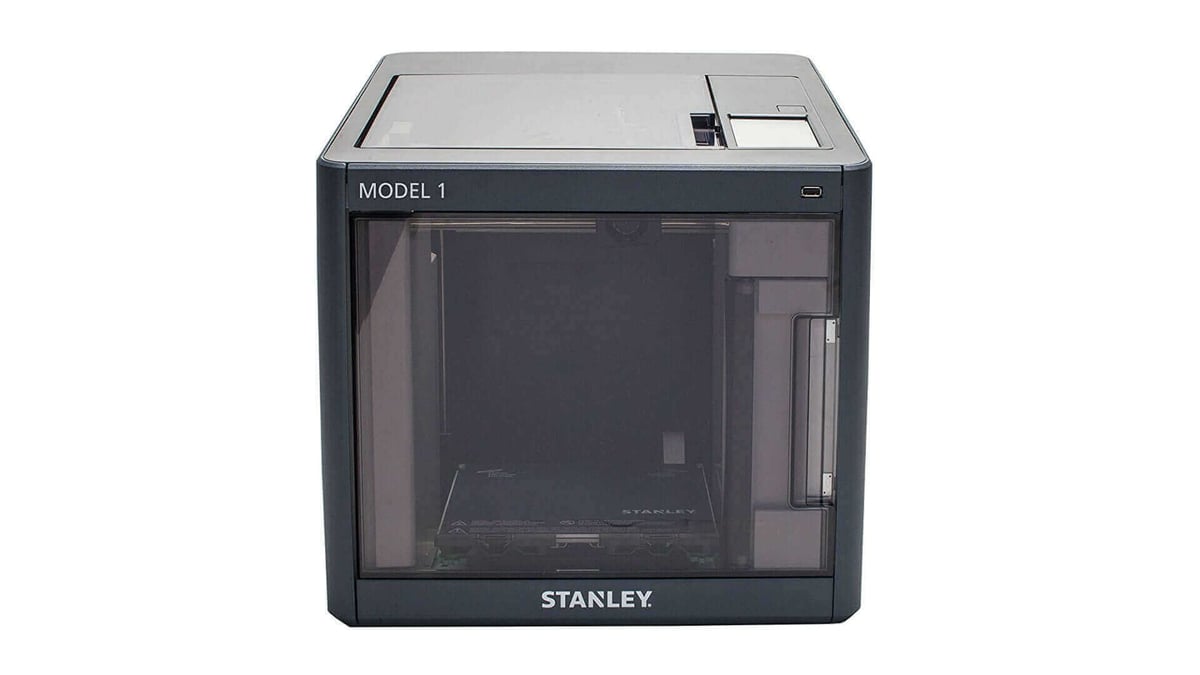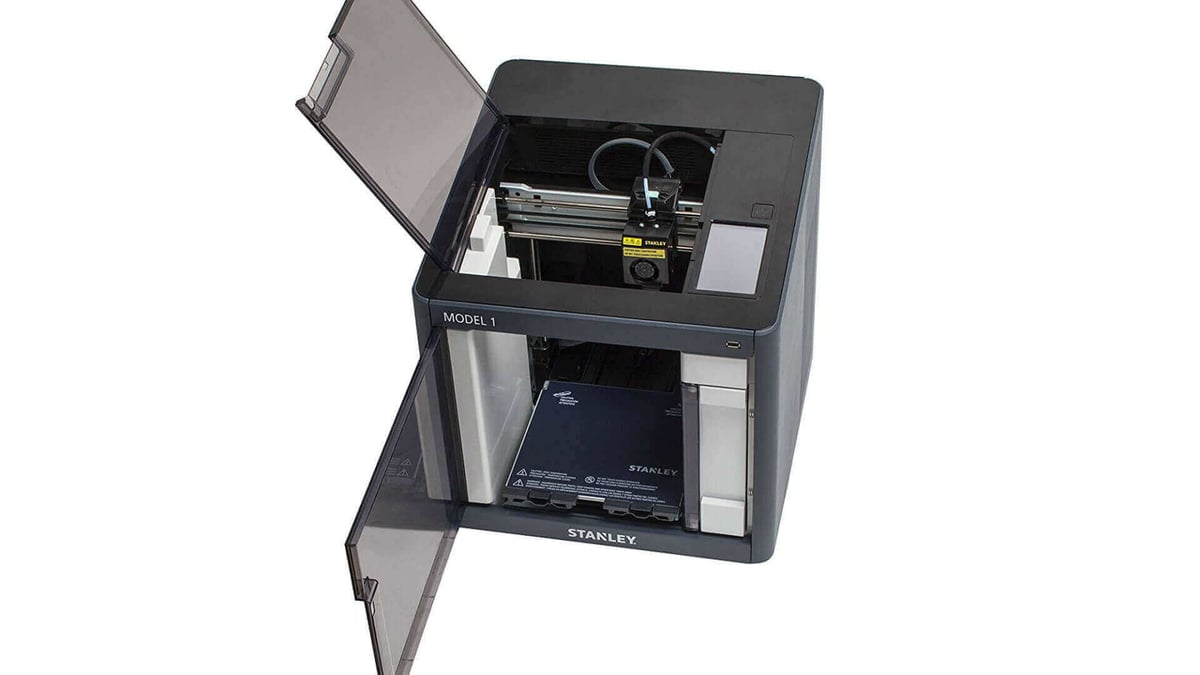Power tool producer Stanley Black & Decker is jumping into the desktop 3D printing game with the release of the its own-brand Stanley Model 1 3D printer.
Joining the likes of Dremel (and by extension Bosch) and its Idea Builder 3D printer, tool manufacturer Stanley Black & Decker has announced it will sell its own 3D printer.
First things first, it ain’t a Prusa. Ironically, for a company that facilitates home DIY with its tools, the printer isn’t in the style of 3D printing’s popular build-it-yourself kits.
Instead, Stanley Black & Decker have opted for simplicity with an enclosed box FDM printer that uses an auto-loading cartridge-based filament system. Part of what the company claims leads to a simplified and convenient user experience.
Other details of the Stanley Model 1 include:
- 421 x 433 x 439mm printer dimension
- 200 x 200 x 185mm build volume
- Single extrusion head
- Layer thickness of 0.05 – 0.4mm
- Accepts PLA and ABS (proprietary cartridges)
- Assisted bed leveling process
- 5-inch touchscreen control panel
- WiFi, Ethernet, USB connectivity

Where Did The Stanley Model 1 Come From?
Perhaps the company senses an impending shift in perception of 3D printing in domestic and small business professions. Or, maybe it’s just getting one foot in the door to gauge customer receptivity to 3D printing. Regardless of the motive, Stanley Black & Decker is playing it safe with the Stanley Model 1.
Rather than pour resources into developing its own machine, the company has instead partnered with Korean manufacturer Sindoh to license its 3DWOX DP200 printer.
A popular seller on Amazon, the 3DWOX DP200 has a reputation for being a capable and reliable sub-$1,500 machine.
So what differentiates the Stanley Model 1 from its popular progenitor? For starters, the Stanley Model 1 is launching at on April 7th at $1,325, an increase over the DP200’s $1,299. Besides this, the key differences appear to lie in the software.
Sindoh’s vanilla machine works well with Cura and its ilk, plus boasts integration with Solidworks CAD software. However, the Stanley 3d printer appears to be bundled with a simplified proprietary software.
We assume that this is to maintain parity with the re-badged printer’s positioning as a dead-simple plug-and-play machine.
There’s no indication that the Stanley machine is locked to this proprietary software though, so it could be that it really is the exact same experience as the DP200.
What do you think? A smart move by Stanley Black & Decker, or just another option clogging up the marketplace? Let us know in the comments below.

Source: Manufacturing Tomorrow
License: The text of "Stanley Model 1: A New (Or Old) Tool For Your Workshop?" by All3DP is licensed under a Creative Commons Attribution 4.0 International License.